Green Roofing for Offices protects your property value and ensures occupant safety, preventing leaks, damp, and energy loss before they become expensive emergencies. Across London and the Home Counties, your project is handled with full regulatory compliance, careful planning, and a focus on reliable, long-lasting performance.
Trust is built on proven experience—our team holds accreditations with Which Trusted Trader and CITB, working only with premium suppliers like Welsh Slate, ALM Lead, and Kemper. Book a free survey today and protect your property.

Neglecting roof maintenance often ends with leaks, damp, insulation breakdown, and escalating structural damage; any delay leads to higher costs and greater risk for every property owner.

Professionally installed Green Roofing for Offices tackles these problems head-on—improving weather protection, energy performance, and compliance for all property types. Whether you’re a homeowner looking for peace of mind, a landlord focused on long-term value, or a business manager prioritising safety and efficiency, proactive roofing is always a secure investment.
Green Roofing for Offices covers installations, repairs, upgrades, and heritage restorations for homes, businesses, and historic properties. Every service is designed for long-term performance, regulatory compliance, and uses materials from trusted suppliers. Solutions are tailored to your building, always delivered with safety, durability, and care.
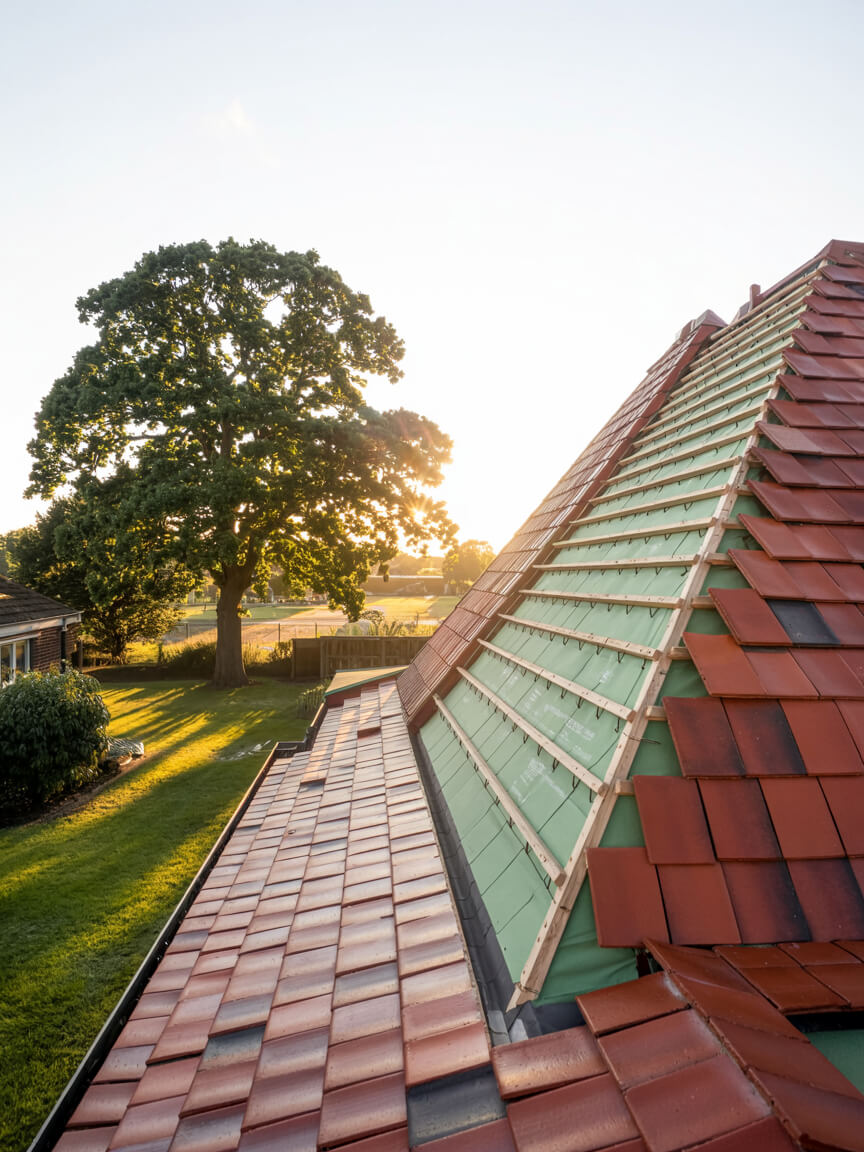
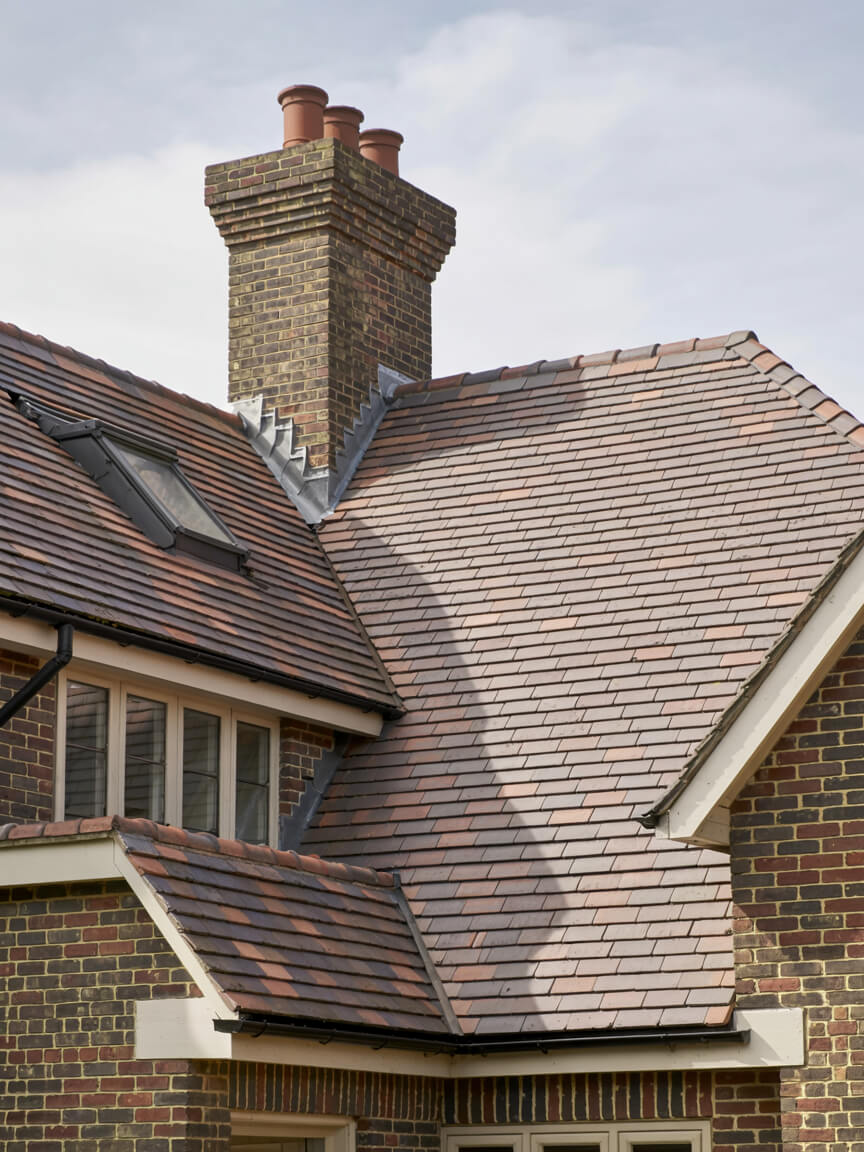
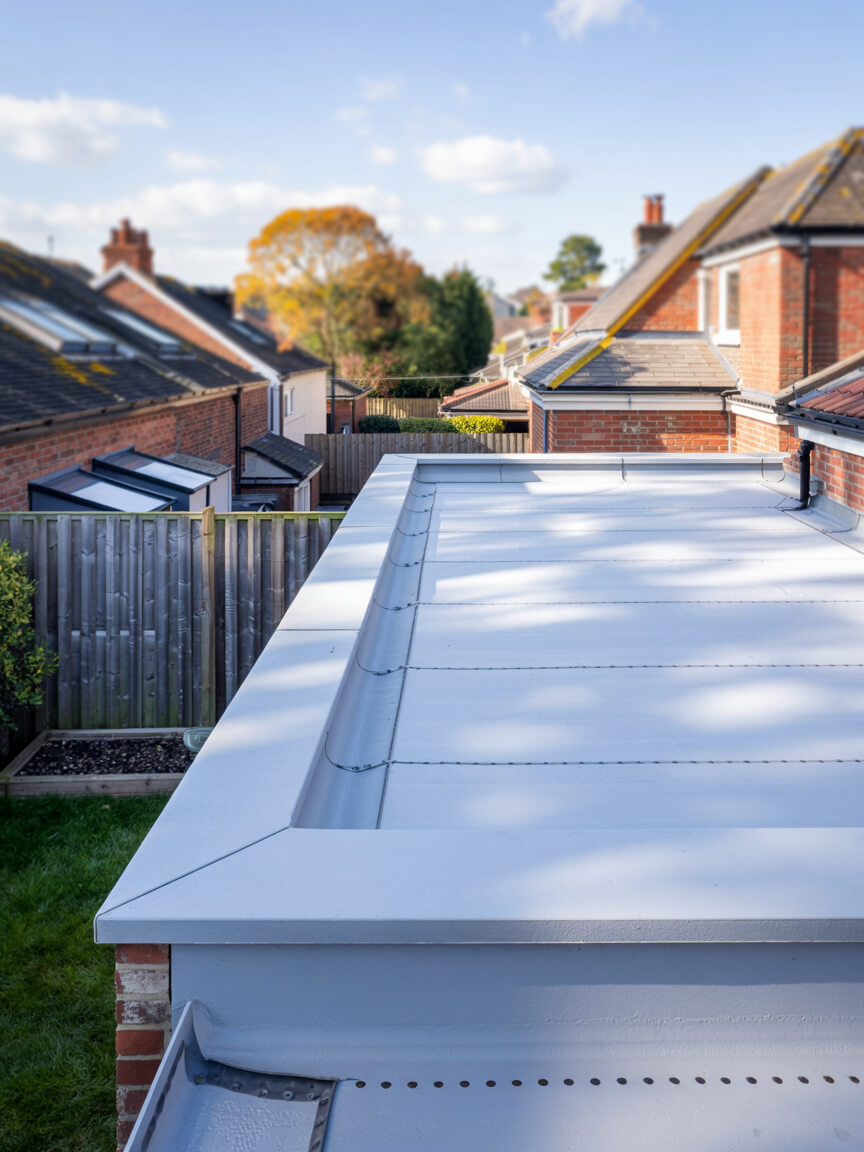
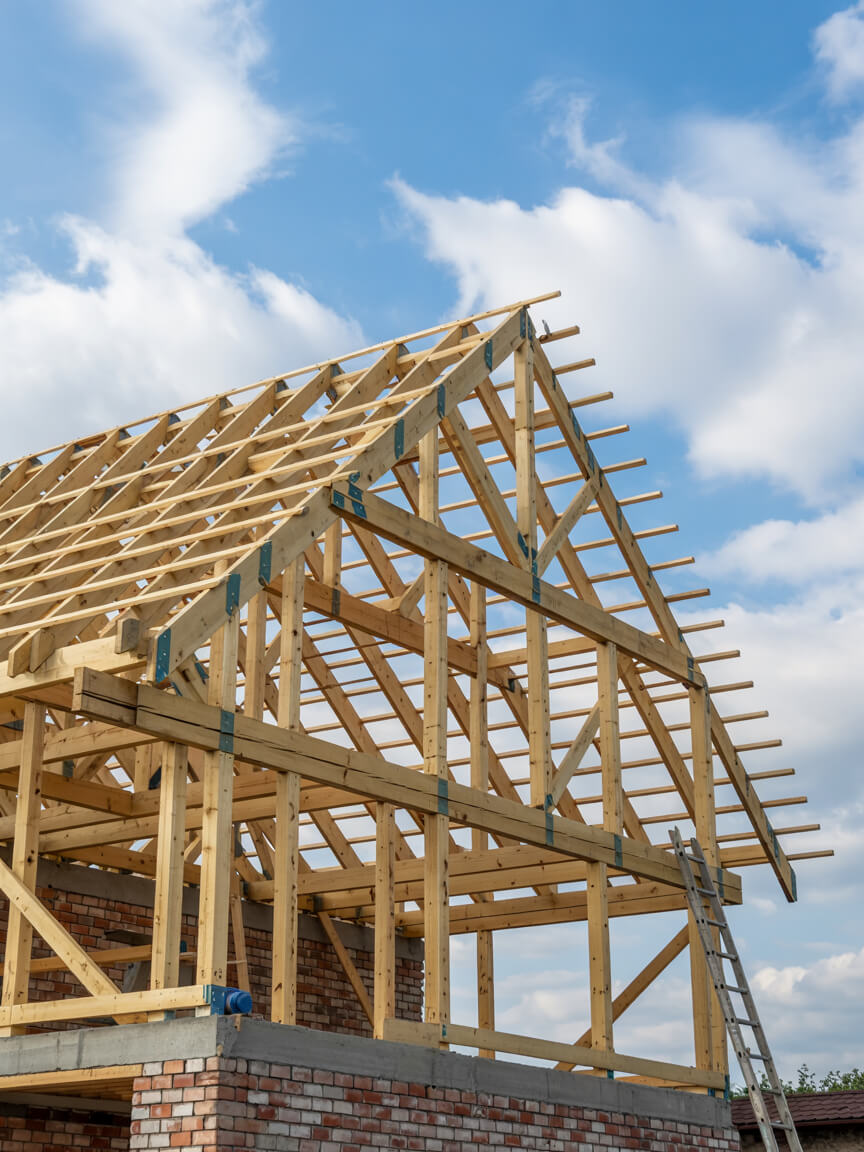
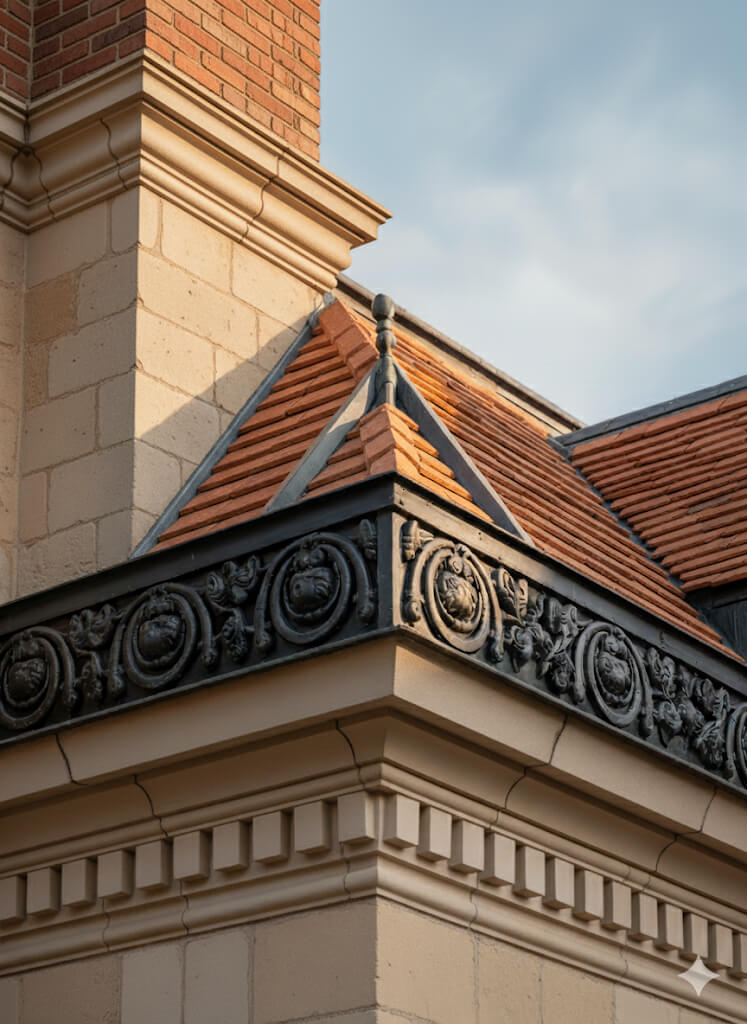
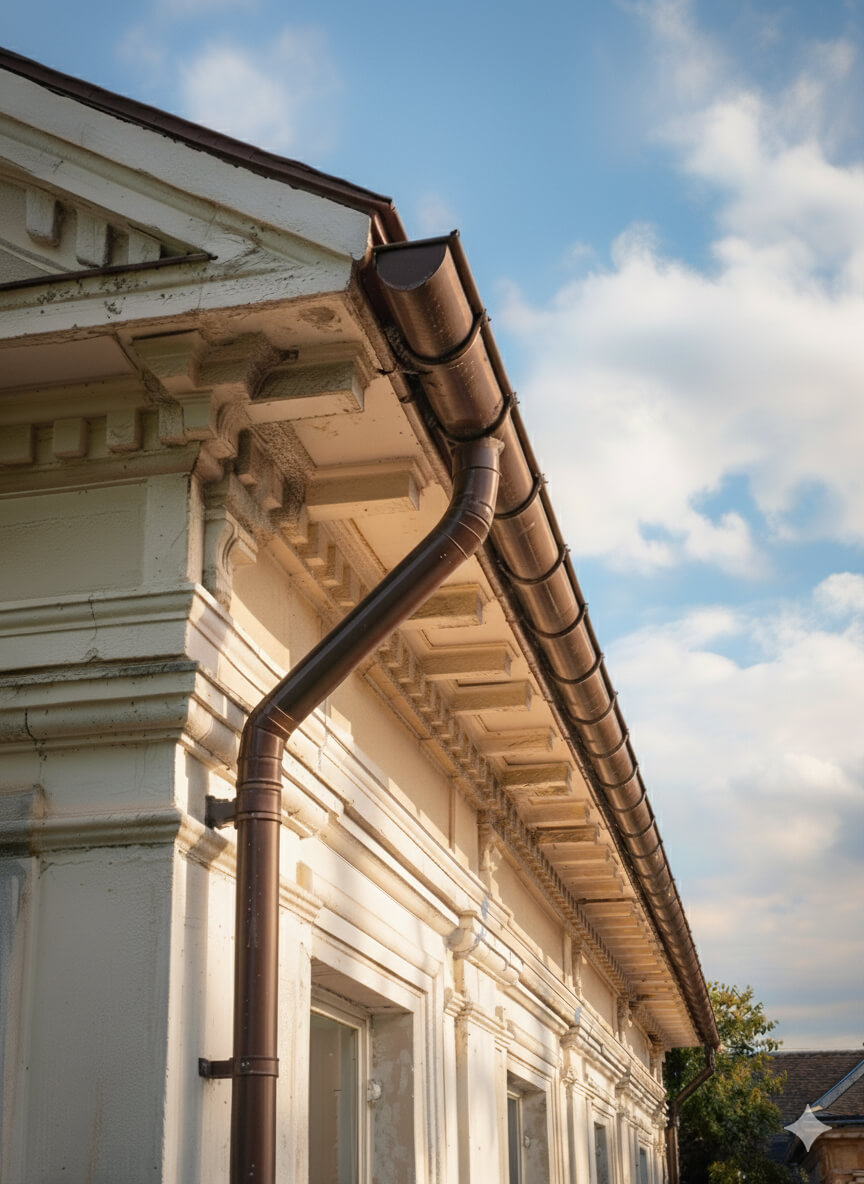

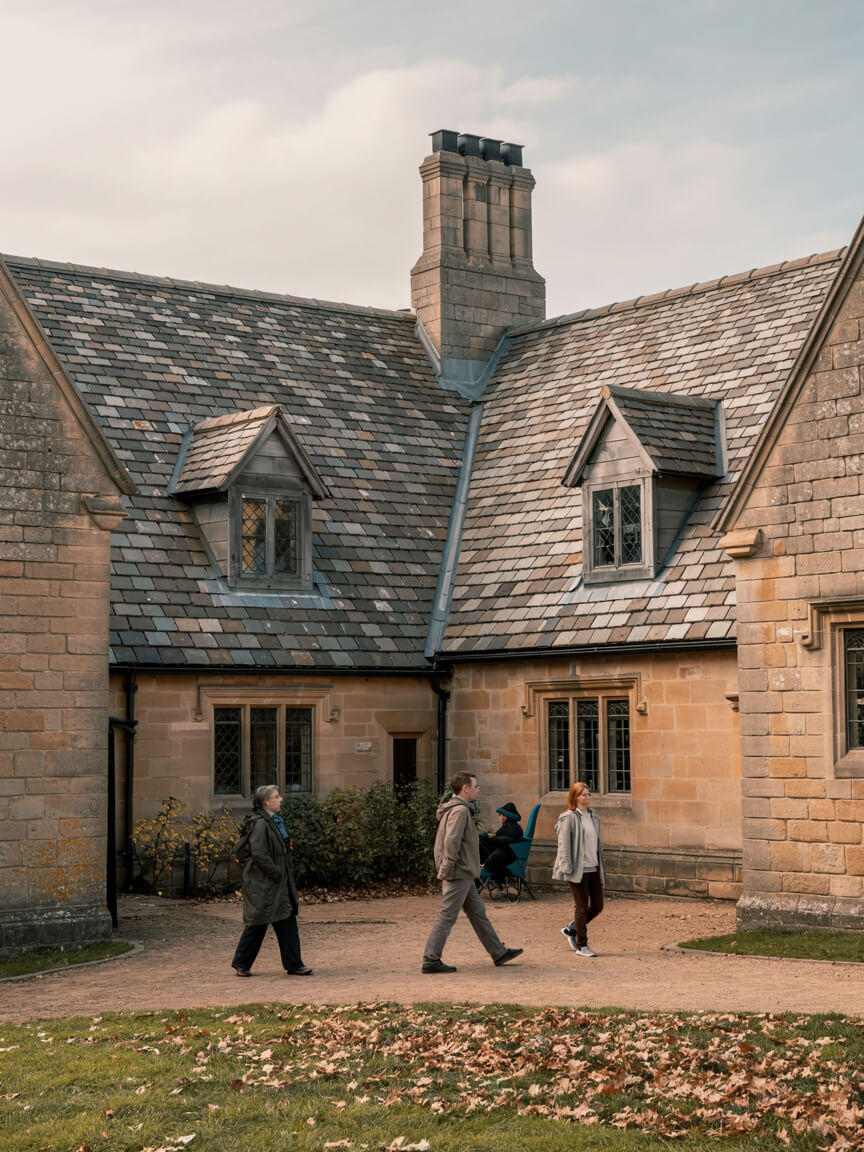
Every Green Roofing for Offices project is adapted to property type, roof structure, and environmental demands. Tailoring ensures compliance with regulations, minimises disruption, and maximises long-term value. From homes and businesses to industrial sites and listed heritage buildings, our flexible approach guarantees roofing solutions that meet unique needs while delivering safety, efficiency, and reliability.
Homes, extensions, and listed buildings.
Offices, retail, schools, and hospitality.
Warehouses, factories, and logistics sites.
Every Green Roofing for Offices project follows proven steps with quality materials. Whether a new installation, upgrade, or repair, each layer adds durability, safety, and efficiency—tailored to protect your property and meet regulatory standards.
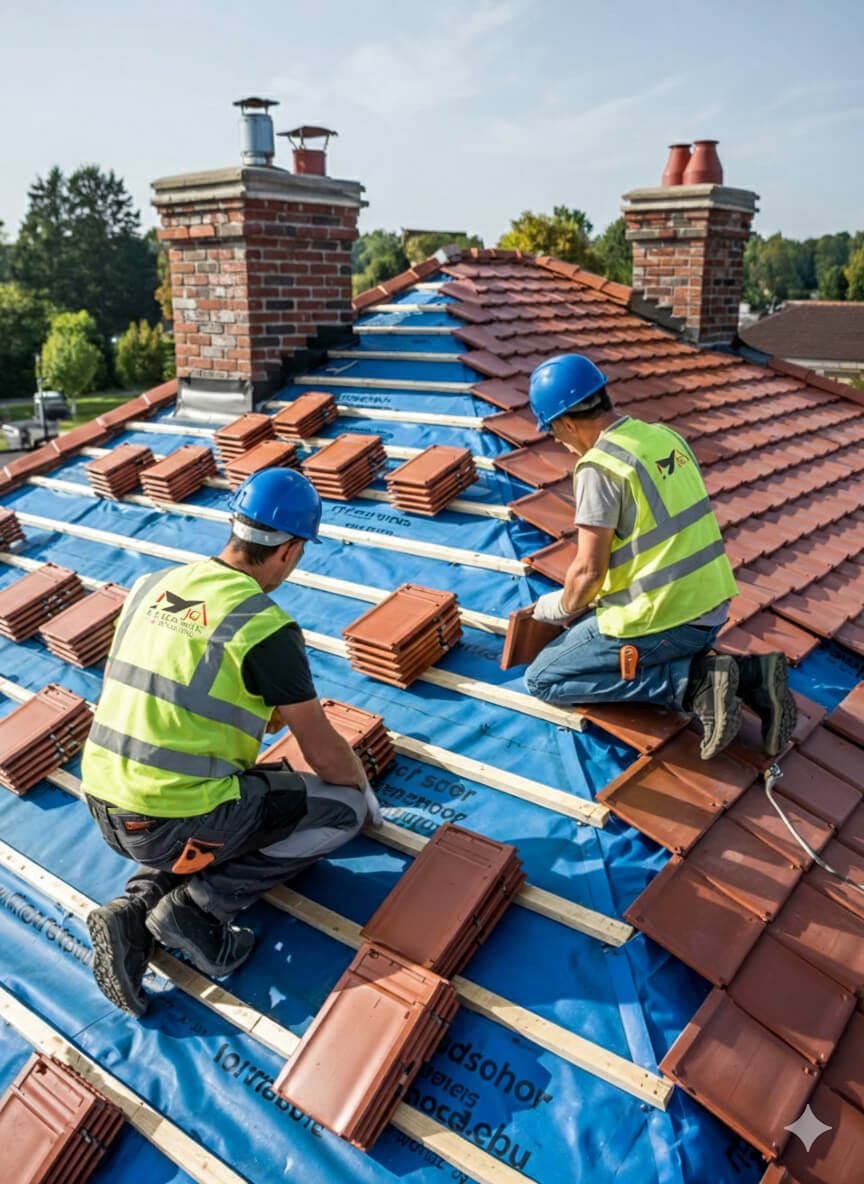
Get a free, no-obligation quote today.
Our experts are standing by to help you choose the perfect flat roofing solution.
⏱ Response within 24 hours guaranteed
Accredited by Which Trusted Trader, CITB, and approved by Kemper and Westwood, our team delivers safe, compliant, and warranty-protected Green Roofing for Offices projects. These credentials mean guaranteed standards and long-term assurance—reinforced by the positive client reviews that consistently highlight quality, professionalism, and trust.


Complete reroofing. Living in Singapore at the time and T was super responsive and communicative.
Replacement of lead box gutter and new flashing to parapet wall. I had an excellent experience using James and the team. He was very prompt in all aspects of communication and completed a first class job. Really pleased.
James completed some repairs on our roof and replaced some of our pebble dash by the roof as well. He was very thorough and fixed everything. He kept us really informed by taking photos and showing us what he did and keeping us updated. It also went onto our neighbours roof and he did the same fo...
We had a leak in our bedroom and James fixed the roof for us to stop it from leaking. All the work came with a warranty. The work that was carried out was good. James and his team were polite, and did all the work quickly and without too much interruption to our day-to-day lives. Would recommend ...
J G Leadworks have repaired and replaced the roofs and gulleys over our warehouse and workshops which have meant both areas are now watertight
James and team were incredibly responsive to my request to look at a serious leak issue on my flat roof. They did a very thorough investigation and explained in detail the issue and gave a fair quote. They were quick to book in and complete the work and have checked in afterwards a few times to m...
James was quick to respond to the initial contact and was able to work around some time constraints I had. He explained what needed doing clearly and was happy to answer follow up questions. He took pictures to show each stage and I feel confident in the work that was done by James and the team. ...
JG Roofing were very easy to work with. Their quote was sensible and they stuck to that figure. They completed many repairs to my roof including, rebuilding a leaded gutter, reinforcing rotten rafters, rebuilding a long felted gutter and felting parapet walls, resurfacing and felting a flat roof,...
Planning and legal checks protect clients from costly errors, delays, and non-compliance, ensuring roofing projects meet regulatory and safety requirements.
Permission is typically required for listed properties, conservation areas, or major roof alterations. All projects must also satisfy Building Regulations, including Part A (structural safety) and Part L (energy efficiency), ensuring compliant and future-proofed installations.
Our team manages the full process, from initial surveys to legal guidance, preparing documentation, and liaising with local authorities where needed. Whether working on modern homes or heritage sites, we ensure every project is delivered legally, safely, and with minimal disruption—providing complete reassurance and peace of mind to property owners.

Every project unites skilled workmanship with rigorously tested materials.
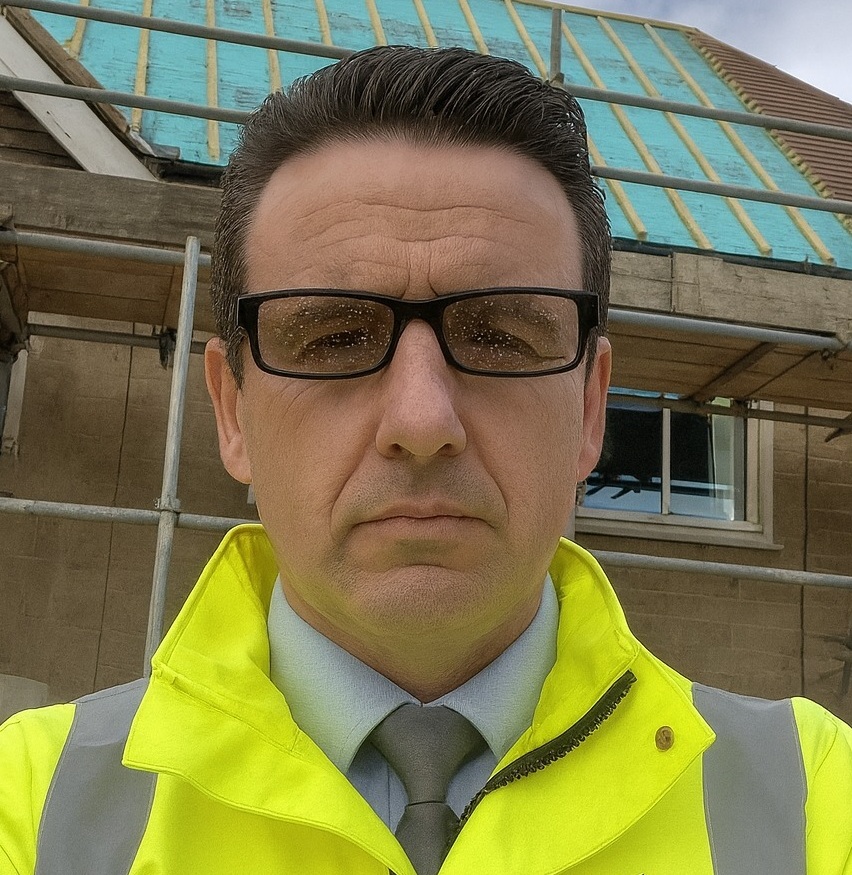
With 25 years of experience in lead sheet roofing, James is a trusted expert in heritage roofing, slate, and tiling. His knowledge of traditional methods, paired with modern compliance, makes him a go-to specialist for projects that demand both craftsmanship and durability.
Green Roofing for Offices provides lasting protection, efficiency, and value, delivering durable, compliant roofing solutions that safeguard every type of property investment.
Selecting Green Roofing for Offices involves balancing durability, budget, compliance, and aesthetics to secure the best-fit roofing solution for your property.
Why Clients Choose JG Leadwork and Roofing
With decades of trade experience, our teams understand the unique demands of London and Home Counties roofing. From heritage-listed properties to contemporary extensions, we adapt solutions to local regulations, weather conditions, and architectural styles with precision.
Accredited by Which Trusted Trader, CITB, and approved by Kemper, Westwood, IKO, ALM, and other leading suppliers.
These credentials guarantee safety, compliance, and access to manufacturer-backed warranties, giving clients peace of mind that their project meets the highest professional standards and benefits from warranty protection.
Our heritage projects use Welsh Slate and handmade clay tiles for authenticity, while leadwork is delivered to Lead Sheet Association (LSA) standards. Commercial installations employ Kemper and Westwood liquid systems for durability and efficiency. Each example demonstrates our reliability, blending traditional craftsmanship with modern performance.
Our workforce includes skilled roofers, heritage specialists, and safety-certified installers.
Every roofer holds NVQs, receives ongoing CPD training, and is qualified in both modern flat systems and traditional techniques, including slate and leadwork.
Team structure ensures projects run smoothly—surveyors identify needs, installers deliver with precision, and supervisors oversee compliance. This approach minimises disruption, accelerates timelines, and guarantees consistent quality across residential, commercial, and industrial roofing projects.
Every project is regulation-compliant, warranty-backed, and focused on long-term results.
Client testimonials and case studies confirm our track record, with projects praised for professionalism, durability, and customer support.
We go beyond installation with aftercare packages, maintenance support, and open communication at every stage. Property owners gain reassurance that JG Leadwork and Roofing stands behind its work. Book a free survey today and discover why homeowners, landlords, and businesses trust us with their roofing.

Get a free quote, rapid response, and expert service across London and the Home Counties. Contacting JG Leadwork and Roofing is your simple first step to dependable roofing solutions.
We source materials from leading suppliers including Supreme and IKO felt systems, Kemper, Westwood and Proteus liquid systems, Welsh Slate, handmade clay tiles, ALM Lead Mills, and Nicholson Air Track. These trusted brands guarantee durability, compliance, and warranty-backed performance across flat, pitched, heritage, and commercial roofing projects.
.
.
For homes, Green Roofing for Offices safeguards comfort and enhances kerb appeal with durable, energy-efficient systems. Whether modern extensions or traditional pitched roofs, tailored solutions improve living standards and protect property value.
For businesses, Green Roofing for Offices delivers cost-effective, large-scale installations with minimal disruption. Projects are planned around operations, with safety compliance, energy performance, and flexible scheduling built in—supporting offices, retail, schools, and industrial facilities with reliable, regulation-ready outcomes.
For heritage properties, Green Roofing for Offices combines authentic materials such as Welsh slate, handmade clay tiles, and ALM lead with skilled conservation techniques. Listed building consent and conservation requirements are fully managed, ensuring traditional character is preserved while integrating modern weatherproofing. This careful balance provides long-term durability without compromising historic integrity or aesthetic value.
JG Leadwork and Roofing delivers Green Roofing for Offices across housing, commercial, heritage, and public sectors. Every industry comes with unique requirements, from safety and compliance to efficiency and conservation. Our adaptability ensures projects are delivered with precision and professionalism—whether safeguarding homes, supporting business continuity, preserving history, or protecting critical public and healthcare facilities.
Durable roofing installed with minimal disruption, ensuring safe, regulation-compliant workspaces for staff and visitors.
High-standard, compliance-focused solutions protect community facilities while meeting strict safety and regulatory obligations.
Heavy-duty roofing tailored for wide spans, ventilation, and long-term maintenance efficiency.
Authentic materials and sensitive methods preserve historic character while adding modern protection.
Weatherproof systems that enhance kerb appeal and guarantee uninterrupted trading for outlets.
Tailored roofing improves guest comfort, safety, and ambience across hotels, restaurants, and venues.
Safe, durable systems designed for schools and universities with minimal learning disruption.
Specialist roofing solutions built for hygiene, safety, and regulatory compliance in medical environments.
Our team of NVQ-qualified roofers, LSTA-trained specialists, and health & safety-compliant professionals bring decades of combined experience. Every project is delivered with meticulous attention to detail, ensuring safe practices and consistent quality across flat, pitched, heritage, and commercial roofing disciplines.
Expertise includes heritage leadwork, slate and tile roofing, modern flat systems, and drone-assisted roof surveys. Ongoing CPD training ensures adaptability to both traditional craftsmanship and the latest innovations—giving clients confidence that every roof is built or repaired with proven skill and care.

A thorough survey highlights existing issues, structural considerations, and upgrade opportunities, ensuring the best-fit solution is identified from the very beginning.
Transparent, itemised quotes detail costs, timelines, and materials—giving you complete clarity and confidence before work starts, with no hidden surprises.
Scaffolding, access solutions, and robust safety measures are put in place to safeguard both property and people throughout the project.
Skilled roofers complete the work using accredited materials and proven techniques, delivering durable, compliant results while keeping disruption to a minimum—whether for repairs, replacements, or new installations.
Each stage is inspected against manufacturer standards and Building Regulations, with photographic documentation provided for transparency and peace of mind.
Each stage is inspected against manufacturer standards and Building Regulations, with photographic documentation provided for transparency and peace of mind.
In a competitive roofing market, many providers look the same on paper. JG Leadwork and Roofing stands out through proven expertise, accredited methods, and specialist techniques. Our combination of traditional craftsmanship and modern technology makes us the safer, smarter choice across residential, commercial, industrial, and heritage projects.
In a competitive roofing market, many providers look the same on paper. JG Leadwork and Roofing stands out through proven expertise, accredited methods, and specialist techniques. Our combination of traditional craftsmanship and modern technology makes us the safer, smarter choice across residential, commercial, industrial, and heritage projects.

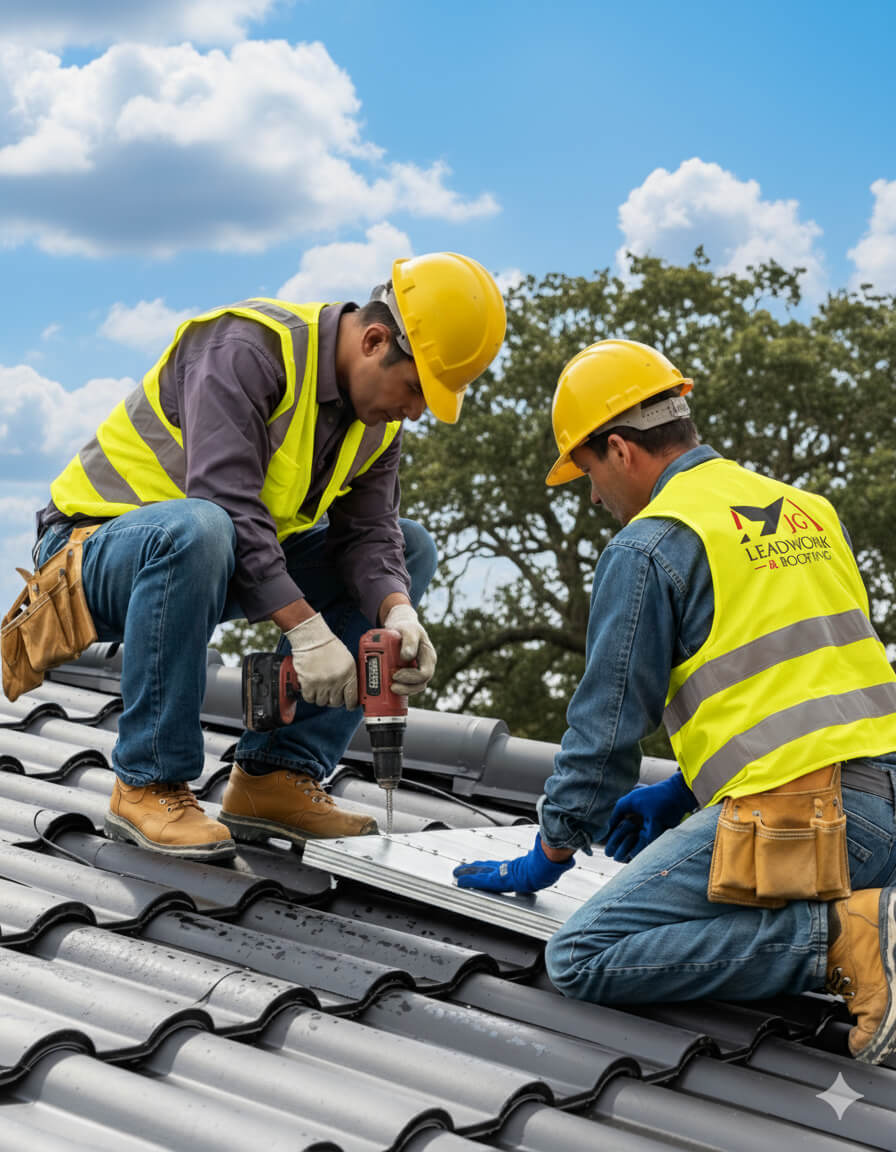
At JG Leadwork and Roofing, every project follows a structured QA process. Each stage—materials, installation, safety, and final sign-off—is measured against manufacturer specifications and UK Building Regulations to ensure durability, compliance, and warranty-backed performance across all roofing services.
Projects are only signed off once all QA checks are complete, giving clients confidence in long-term performance, structural safety, and insurance-backed peace of mind.
Every Green Roofing for Offices project by JG Leadwork and Roofing is delivered in strict alignment with UK Building Regulations and recognised frameworks. This ensures structural safety, energy efficiency, durability, and protects warranties and insurance coverage across residential, commercial, industrial, and heritage properties.
Clients can be confident their project is completed legally, safely, and insurance-ready—delivering long-term performance, compliance assurance, and complete peace of mind.
Property owners often wonder about Green Roofing for Offices—from costs and timescales to permissions. Below, you’ll find straightforward, trustworthy answers to the most frequent and practical queries.
When a flat or pitched roof leaks during or after heavy rain, the underlying causes almost always trace to a handful of technical and environmental factors—each with specific warning signs and consequences for property owners. Understanding these causes is critical: even a small leak can escalate rapidly, leading to water ingress, interior damage, structural risk, insurance issues, and long-term maintenance liabilities. The sections below break down the leading culprits in the UK context, so you can diagnose the problem and prevent wider disruption.
A primary culprit is deterioration of the roof’s waterproof membrane (the layer designed to repel water) and failure at its seams (joins between membranes or layers). Over time, UV exposure, temperature swings, and mechanical stress from foot traffic or equipment cause materials like felt, single-ply, or asphalt to crack, blister, or become brittle. The UK’s frequent freeze–thaw cycles (water freezes in hairline cracks overnight and expands, then thaws by day) accelerate this wear, opening up new avenues for water ingress.
Typical symptoms include:
Risks: Persistent water ingress eventually leads to decay of roof timbers, degradation of insulation, and interior mould—costly to fix if left unchecked.
Flashing—the metal (often lead or aluminium) installed at edges, abutments, and penetrations—protects critical transitions on roofs. If flashing becomes loose, corroded, or is detailed poorly during installation, capillary action (where water travels upward across surfaces via tiny gaps) draws rain inside, especially during prolonged wind-driven storms that are common in the UK. Older properties can suffer from worn mortar at the flashing line, while new installations might experience detachment if flexible sealants fail.
Indicators for property managers to check:
Risks: Even small weaknesses at junctions quickly admit water, leading to hidden damp, timber decay, and possible compromise of cavity wall insulation.
Flat or very low-slope roofs are particularly vulnerable to ponding—standing water that doesn’t drain away within 48 hours after rainfall, a threshold used by many UK insurers. This can result from ponded sags in the deck, blocked outlets, inadequate falls (the designed slope for drainage), or debris build-up (moss, leaves).
Prolonged ponding breaks down surface membranes and adds substantial weight, stressing the structure. Meanwhile, roofs lacking adequate ventilation or insulation—an increasing concern as UK Building Regulations (Part L) emphasise energy performance—are prone to interstitial condensation: this is where warm, moist internal air meets cold roof surfaces inside, condensing unseen within the structure, ultimately rotting timbers and producing black mould.
Red flags include:
Professional diagnosis involves several steps:
| Cause | Symptom | Risk If Ignored | Indicative Remedy |
|---|---|---|---|
| Membrane/Seam Failure | Damp patches, spongy decks | Timber decay, mould | Re-seal seams, renew membrane |
| Flashing/Detailing Defect | Perimeter staining, musty odour | Structural damp, insulation loss | Replace or re-bed flashing |
| Ponding / Poor Drainage | Pools >24–48h, ceiling stains | Weight stress, failure | Improve falls, unblock outlets |
| Ventilation/Insulation Gaps | Mould, paint bubbling, odour | Condensation, timber rot | Upgrade insulation, add vents |
Each element must be checked in context; often, effective remediation involves combining upgrades in membrane, detailing, and drainage, paired with improved insulation and ventilation to ensure long-term watertightness and efficient performance.
The cost difference between slate roofing and tile roofing for office buildings in London can be marked. The main drivers are material selection, installation complexity, roof design, and adherence to UK building regulations including BS 5534 (the code for slating and tiling) and Part L (which regulates energy performance and insulation). These cost factors matter because property owners and managers face budget constraints, compliance risks, and often need to plan for both immediate and lifetime costs when upgrading or replacing a commercial roof.
Material choice is the fundamental factor affecting initial outlay. Slate is a premium material, typically natural and sourced from Wales, Spain, or other regions, prized for appearance and longevity. Tiles are usually manufactured from clay or concrete; they’re widely available across the UK, and their price reflects this greater supply.
Technical properties, such as a material’s U-value (how much heat passes through it—the lower the better), affect the amount of insulation required under Part L. Slate’s density can offer tighter waterproofing, but may need extra underlays to meet insulation rules.
Installation costs diverge sharply because of skill, complexity, and compliance demands:
London sites—especially offices—often incur higher scaffolding, safety, and access costs due to local health and safety requirements for multi-storey buildings.
Heritage and regulatory demands greatly affect cost. In London, many buildings are listed or in conservation areas, where heritage-grade slate or handmade clay tiles may be mandatory for re-roofing. Such materials add cost through their rarity, quality standards, and the skill required to instal them.
Modern buildings still need to comply with rules such as Part L (insulation and energy performance), fire safety, and wind resistance under BS 5534. Building Control sign-off or insurance may require documentation proving all standards have been met.
Several location-specific factors drive up costs in London:
A structured side-by-side comparison helps clarify key points:
| Factor | Slate (per m²) | Tile (per m²) | Why it matters |
|---|---|---|---|
| Material Supply | £30–£80+ | £20–£40 | Slate is very durable; tiles cheaper |
| Installation | £60–£100 | £40–£80 | Slate needs specialist skill, tiles faster |
| Lifespan | 70–100+ years | 50–70 years | Slate lasts longer, tiles simple to replace |
| U-value Impact | Lower | Slightly higher | Both must meet insulation rules (Part L) |
| Heritage Approval | Often required | Sometimes | Compliance may dictate material regardless |
Tip: Always confirm local planning requirements, seek a full inspection, and require a detailed quote with all material and compliance costs. Look beyond the price per m² to total lifetime value and regulatory fit.
The installation time for a new office roof depends on the roofing system chosen, property scale, and planning requirements. Most standard flat or pitched office roofs can be installed or replaced in as little as a week, but larger or more complex projects—especially those involving green roofing or heritage specifications—may span two to four weeks. A clear timeline helps building owners and facilities managers minimise business disruption, plan logistics, and manage cost expectations. Understanding realistic installation durations is essential for scheduling around tenants, maintenance windows, or seasonal weather.
Unexpected delays are rare with careful planning, but can arise from adverse weather, material deliveries, or the discovery of hidden structural defects. The timeline should include not just the physical installation, but also the preparatory works, weatherproofing stages, and post-completion checks required for insurance and warranty validation.
For most office buildings, roof installation follows a three-phase structure: (1) removal and preparation, (2) new system installation, (3) finishing and commissioning.
Every installation includes curing periods for adhesives and weathering checks, especially relevant in UK climates.
The type, size, and accessibility of your office roof significantly impact the timeline. Larger, multi-storey blocks require additional scaffolding and safety measures, which can add days. Rooftops with restricted access, HVAC units, or solar installations may require specialist handling and coordination with other contractors.
Seasonal weather is a key factor in the UK:
Installers often monitor forecasts and may plan vulnerable steps (like waterproof membrane application or green roof planting) around anticipated weather windows to protect site integrity.
Routine maintenance is essential for maximising the service life of any roof, especially green or flat systems. Facility managers should budget for:
Some warranties stipulate minimum maintenance and record-keeping for defect cover to remain valid. Proactive attention will identify small issues before they escalate, which is significantly more cost-effective than emergency repairs.
A well-maintained office roof can far exceed the minimum design life promised by manufacturers. The table below summarises key UK roofing systems:
| Material | Typical Lifespan | Inspection Frequency | Maintenance Needs |
|---|---|---|---|
| Slate | 80–100 years | Every 5 years | Replace slipped/broken slates; minimal |
| Clay or Concrete Tile | 50–75 years | Every 3–5 years | Replace cracked tiles; check ridge/fixings |
| High-Performance Felt | 10–20 years | Every 2 years | Seal edges; patch seams; clear outlets |
| Liquid-Applied (PU/Silicone) | 25–40 years | Every 3 years | Check joints; recoat as needed |
| Green Roof (Sedum) | 30–50 years | Annually | Weed control; substrate top-up; drainage check |
Higher-grade materials—especially slate, tile, and quality membranes—reward upfront investment with superior resistance to UV, wind, and freeze–thaw cycles. Regular inspections protect warranties and ensure long-term reliability. For all office roofs, structured care reduces disruption, eliminates costly urgent repairs, and extends the useful service life for decades.
A typical office green roof project in the South East of England ranges from £120 to £200+ per square metre, depending on system complexity, structure, finish level, and property accessibility. Upfront costs are higher than a conventional roof, but long-term savings can be substantial thanks to reduced energy bills, extended roof lifespan, and improved compliance. Warranties and credible accreditation are essential; without them, you risk unexpected repair bills, insurance hurdles, and regulatory headaches in the years after installation. For businesses and landlords, robust warranties and proven installer credentials offer financial predictability and protect your investment from the hidden costs of shortcuts.
Green roofing costs can’t be judged by materials alone; most of the variation comes from scale, property type, specification, and labour requirements. Factors that influence the budget include:
| Office Roofing Service | Typical Range (UK, ex VAT) | Main Influences |
|---|---|---|
| Green Roof Installation | £120 – £200+ per sq. m | Structure, substrate, planting type |
| Green Roof Retrofit/Upgrade | £140 – £220+ per sq. m | Strengthening, building age, access |
| Conventional Reroof (Office) | £85 – £140 per sq. m | Membrane, insulation, finishes |
Even at the higher end, data-backed estimates suggest green roofs may recover cost differentials within 10–12 years through energy savings, reduced maintenance, and extended durability (Energy Saving Trust, 2024).
For office buildings, an insurance-backed warranty is fundamental—not just a paperwork exercise. These warranties, typically lasting 10–20 years, cover both the integrity of roofing materials and the quality of installation work. Key inclusions are:
Some systems also include roof performance guarantees, so in the unlikely event of early failure, repair costs are fully covered. Without this, any latent defect—especially moisture ingress hidden beneath vegetation—can lead to costly claims and protracted liability disputes.
The value of choosing an accredited installer can’t be overstated. Qualifications such as NVQs in Roof Waterproofing, CITB Health & Safety certification, and membership of schemes like Which? Trusted Traders or TrustMark are not just badges—they’re your assurance of compliance with Building Regulations and eligibility for insurance-backed warranties. An accredited contractor:
Importantly, only installations completed by accredited professionals typically qualify for extended manufacturer guarantees or meet the threshold for landlord/tenant handover requirements.
Upfront savings from cutting corners inevitably backfire—especially in complex green roofing. Common shortcuts include:
These lapses can result in structural decay, major compliance breaches, and litigation liabilities. Patching later is always more expensive than doing it right the first time. For offices—where downtime or health & safety risks affect every stakeholder—the slow reveal of hidden faults is a financial, operational, and reputational liability best avoided through verified materials, robust warranties, and accredited installation.